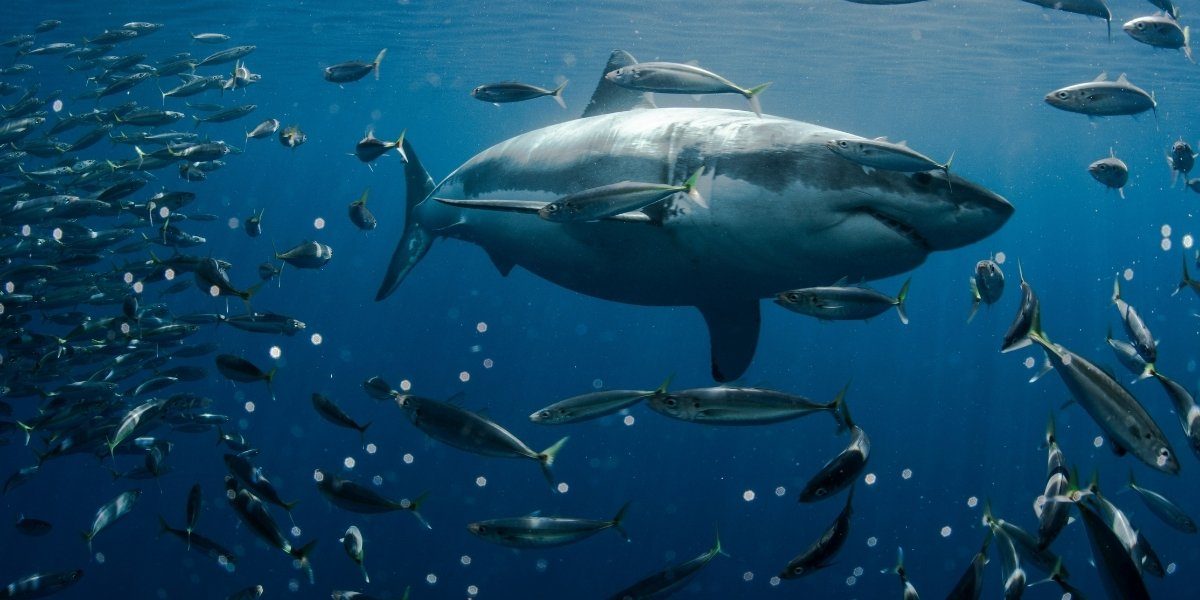Apex Predator of the Deep: Unveiling the Biology, Behavior, and Conservation of the Great White Shark
The great white shark (Carcharodon carcharias) stands as one of the most iconic yet misunderstood apex predators in the ocean. As a crucial player in maintaining the balance of marine ecosystems, the great white is often viewed with both awe and fear. While it is feared for its size and hunting capabilities, this magnificent creature plays a critical role in the health of oceanic environments. This article will delve into the biology, behavior, and conservation of the great white shark, offering a comprehensive understanding of this powerful predator.
Read Also: How to Boost Success in Your Car Insurance Business
Physical Characteristics and Abilities
The great white shark is an apex predator, largely due to its impressive physical characteristics, which have evolved to make it an incredibly efficient hunter in the marine world. From its powerful jaws to its specialized senses, the great white shark is perfectly adapted for survival in the deep sea.
Size and Dentition: Built for Power
One of the most striking features of the great white shark is its sheer size. Adult great whites typically range between 15 to 20 feet in length, with some individuals reaching up to 22 feet. This size is complemented by a muscular body and a streamlined shape, allowing for swift and powerful movement through the water.
The teeth of a great white shark are also notable for their serrated edges, which are designed for cutting through the flesh of prey. These teeth are continuously replaced throughout the shark’s life, ensuring it always has a functional set for hunting. A mature shark may have up to 300 teeth in its mouth at any given time.
Specialized Senses: Nature’s Tools for Hunting
Great white sharks possess an array of specialized senses that make them formidable predators. Smell is one of the most important senses, with the ability to detect blood in the water from miles away. They also possess electroreception through ampullae of Lorenzini, which allows them to detect the electrical signals emitted by the muscles and nervous systems of prey, even in complete darkness or murky water. This gives them a distinct advantage in locating prey that might otherwise be hidden.
Additionally, great white sharks have excellent vision, enabling them to see both in low-light environments and at great depths. Their visual and electroreceptive senses work in tandem to locate prey with remarkable efficiency.
Hunting Strategies and Diet
Great white sharks employ a variety of hunting strategies, making them highly effective predators. Their diet is diverse, ranging from smaller fish and sharks to larger prey like seals, dolphins, and even whales.
Ambush Predation: The Art of Surprise
One of the primary hunting techniques used by great white sharks is ambush predation. They are known for their ability to launch an attack from below, using the element of surprise to catch prey off guard. This technique is most often observed in the great white shark’s attacks on seals. By swimming from the depths below, they can approach the prey silently and strike with incredible speed and power.
Great white sharks often attack seals by breaching the surface of the water in a high-speed leap, delivering a powerful bite to immobilize the animal. After the initial strike, they tend to wait for the prey to weaken before attacking again.
A Varied Diet: From Fish to Marine Mammals
The diet of a great white shark is not limited to seals. They also hunt various species of fish, including tuna and small sharks, as well as marine mammals like dolphins and sea lions. Interestingly, while they are capable of consuming large prey, they tend to eat only a portion of it at a time, leaving behind the rest for other scavengers in the ecosystem. This behavior is part of their role as apex predators, helping regulate prey populations and maintaining a balanced marine ecosystem.
Life Cycle and Behavior
The life cycle of the great white shark is marked by relatively slow maturation, low reproductive rates, and long-distance migratory patterns, all of which make understanding their behavior and movements crucial for their conservation.
Reproduction and Growth Rates
Great white sharks are known for their slow growth rates, with males reaching sexual maturity at around 9 years and females at around 14 years. Their gestation period is one of the longest among all sharks, lasting up to 18 months. Female great whites give birth to live young, called pups, with litter sizes ranging from 2 to 14 pups per birth.
The slow reproductive rate of the great white makes it vulnerable to overfishing and habitat loss, as it takes many years for the population to recover from declines.
Migratory Patterns and Social Behavior
Great white sharks are known for their long-distance migrations, often traveling thousands of miles across vast ocean basins. These migrations are believed to be linked to seasonal changes in water temperature and prey availability. The sharks often return to the same feeding areas year after year, a behavior that provides key insights into their migratory routes and the ecosystems they depend on.
While great white sharks are often depicted as solitary creatures, they do exhibit social behaviors, particularly in areas with abundant prey. They are known to congregate around feeding sites, such as those near seal colonies, where multiple sharks may feed in close proximity.
Habitat and Distribution
Great white sharks are found in temperate and subtropical waters around the world, primarily along coastlines where prey species are abundant. Their distribution is influenced by water temperature, with sharks typically preferring water temperatures between 12°C and 24°C (54°F to 75°F).
Global Distribution
Great white sharks are found off the coasts of North America, Australia, South Africa, and parts of Europe. They tend to favor shallow coastal waters, although they are known to venture into deeper, offshore waters during their migratory routes. They can also be found in broad geographic areas, from the cold waters of California and Newfoundland to the warmer regions of South Africa and Australia.
The Human Element: Threats and Conservation
Despite their importance in marine ecosystems, great white sharks face significant threats due to human activities. Overfishing, habitat degradation, and negative perceptions have led to a decline in shark populations worldwide.
Threats to Great White Sharks
One of the greatest threats to great white sharks is bycatch in commercial fisheries, where they are accidentally caught in nets or on fishing lines. Habitat degradation, including pollution and coastal development, also impacts their ability to find suitable prey and breeding grounds. Additionally, shark finning, though illegal in many countries, remains a significant problem in certain regions.
Conservation Efforts
To address these threats, many countries have implemented legal protections for great white sharks, such as banning shark finning, establishing marine protected areas, and regulating fishing practices. Additionally, global organizations like the International Union for Conservation of Nature (IUCN) have classified the great white shark as vulnerable, emphasizing the need for continued conservation efforts.
The Role of Conservation in Maintaining Ecosystem Balance
Conserving great white shark populations is not only important for the species itself but for the overall health of marine ecosystems. As apex predators, great white sharks help regulate the populations of smaller predators and prey, maintaining a balanced and functioning food web.
Dispelling Myths and Fostering Understanding
One of the biggest challenges facing great white sharks is the misunderstanding and fear they inspire, often fueled by sensationalized portrayals in the media. The truth is that great white shark attacks on humans are incredibly rare, and sharks generally do not pose a threat to human populations.
Read Also: Discovering the Technological Feats of Ancient Civilizations
Educating the Public
Educating the public about the ecological importance of great white sharks and correcting common myths is a crucial part of their conservation. By fostering a better understanding of these creatures and their role in ocean ecosystems, we can build greater respect for sharks and promote efforts to protect them.
The great white shark is one of the most fascinating and misunderstood creatures in the ocean. With its impressive hunting abilities, remarkable biological traits, and crucial role in maintaining marine ecosystems, the great white is more than just an apex predator—it’s a vital part of our oceans’ health. Through continued conservation efforts, education, and scientific research, we can ensure that this majestic species continues to thrive in our oceans for generations to come.














